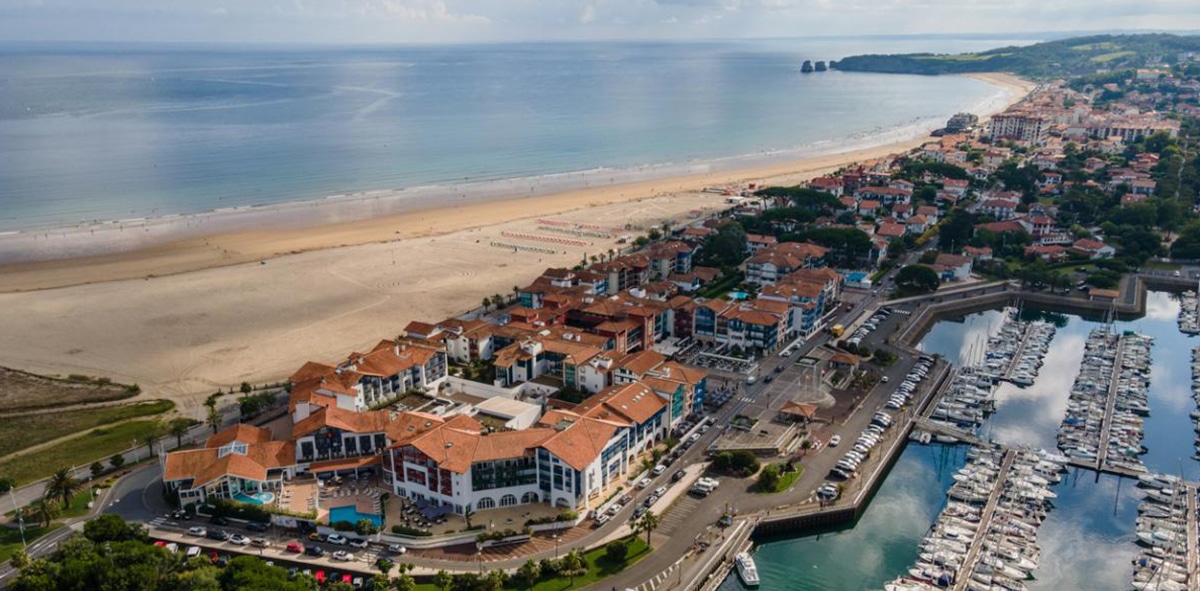
Hendaye is the name of a beautiful destination in France. Did it sound Japanese to you? Well no, it's a French commune French Basque Country which is located on the border with Spain and in the European summer months it is populated with tourists.
Countering the daily cold a bit, let's see today how is Hendaye and what to do there.
Hendaye
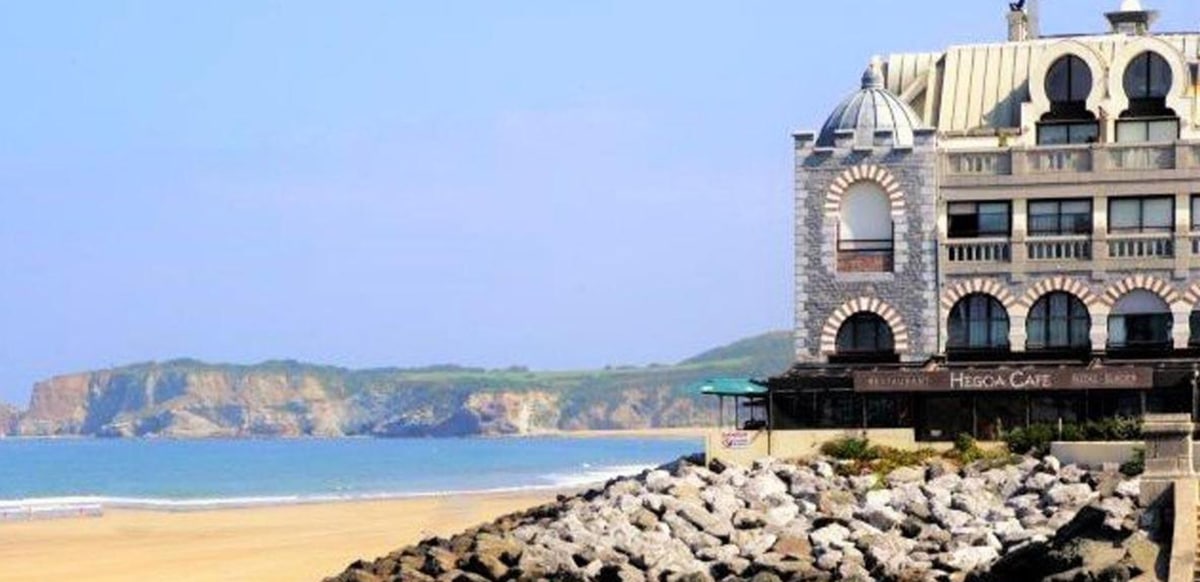
As we said before, it is a border city with Spain, located near the Spanish cities of Irún and Fuenterabía. History tells us that in 1940 Hitler and Franco met here and in Basque the name that some clueless can confuse with Japanese means big bay.
Due to its geographical location It has been a territory of tensions between France and Spain, but only in 1636, in the framework of the Franco-Spanish War, was it occupied by the Spanish. In the middle of the Bidasoa River, the border between the two nations, 67 kilometers long, is the famous Pheasant Island, meeting place between kings, that since 1901 by turns of six months each country has its sovereignty.
Hendaye can be reached by train, using the RENFE and SNCF services, by boat, which arrives from Fuenterrabía in just five minutes, and of course, by road.
Things to do in Hendaye
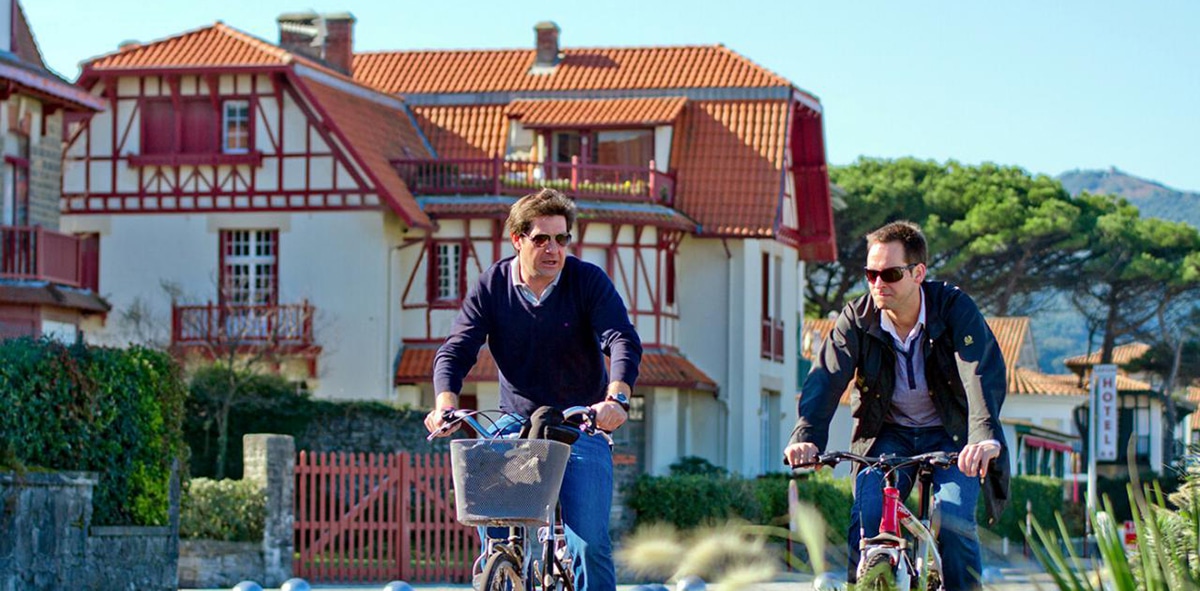
This French border town is beautiful. Have three kilometers of beaches sandy, a charming village with basque-style houses, some in neo-Basque style, and a pseudo medieval castle dreamlike, the Château Abbadia.
Hendaye is a popular tourist destination for both countries, so the must is to walk through the streets of its historic helmet. The old part of Hendaye, located next to the train station, is where Franco met Hitler and his group to discuss the participation or not of Spain in the Second World War. They did it inside an armored wagon and they did not reach any agreement.
La Republic Square It is the center and heart of the town and that is why you have to stop and eat or drink something on one of its terraces. If you go on a Wednesday morning you will witness and participate in the colorful weekly market. Next to the square there is an old building: the Church of San Vicente, from the XNUMXth century.
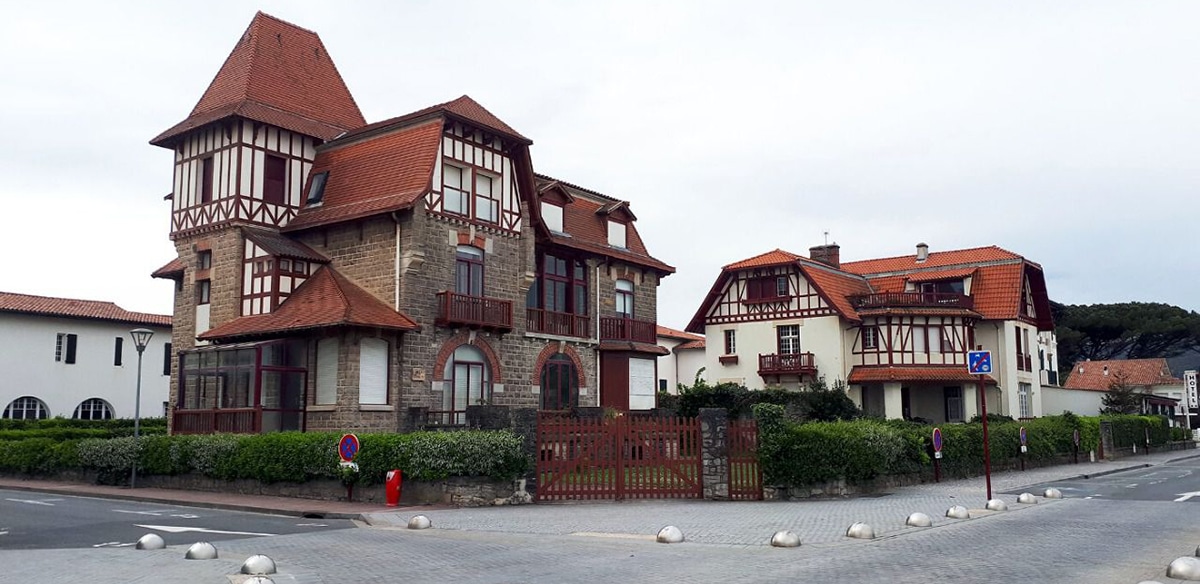
On the outside this church is pristine white, with some stones in the corners and red shutters. Inside it has wooden galleries and a beautiful XNUMXth century chapel. Following the walk through the old town of Hendaye we came across the Gaztelu Zahar, a pediment from 1899 which stands where a fortress of the same name used to stand, destroyed in one of the clashes between Spain and France. Today Basque pelota is played here, for example, or other events take place.
This site is on the way to the beach and next to the water is where the bay road, parallel to the coast, offering the most beautiful riverside views you can imagine. You will see the river, the opposite coast and the ruins of the medieval walls, still with some cannons on the defensive. are in total 14 kilometers, from the beach of Hendaye to the bridge that crosses towards Irún and continue traveling across Hondarribia if you want.
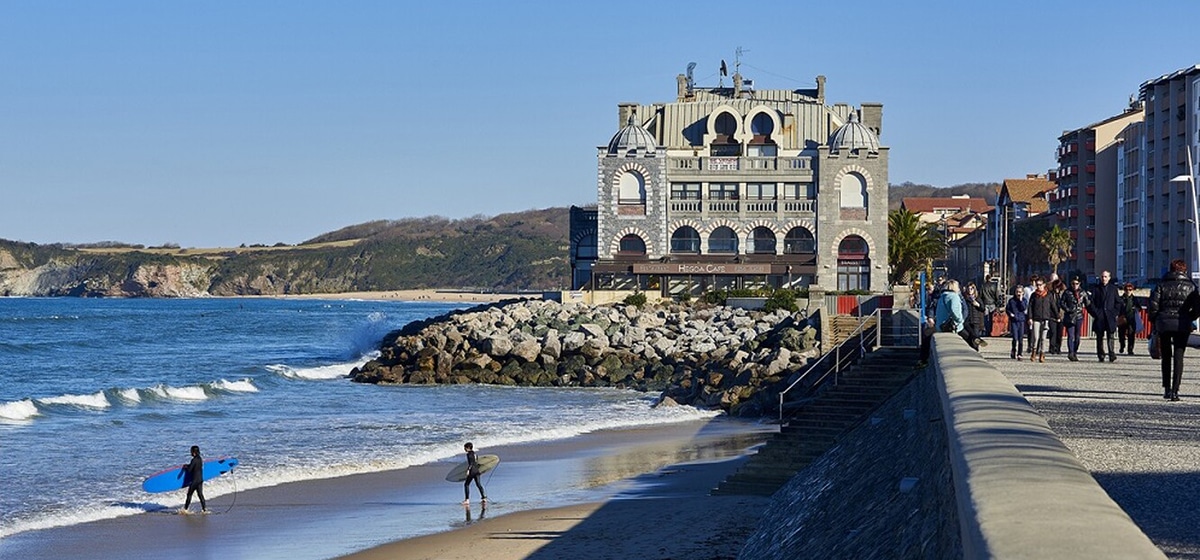
As we said at the beginning, Hendaye is a tourist pole in summer. That's right, the great combination of water, sun and beach make it a magnet in the summer months. The main beach is three kilometers long and has fine, golden sands.. Wide, it is full of friends and families and the waters, not always calm, offer good conditions for surfing. And if you don't want to run into people, you walk a bit and walk away. Yes, in the end nudism is practiced so you will see less people… but naked people!
This beach that we have just described is called ondarraitz and is decorated with typical Basque houses, more modern, yes, that's why they are known as houses neo basque style. They date from the beginning of the XNUMXth century and bear the signature of the architect Edmond Durandeau. Between them and the river is the promenade o Boulevard of the Sea and if you walk through it you will see a single building built on the beach itself: it is the Old Casino Croisière, from 1884 and in Arabic style.
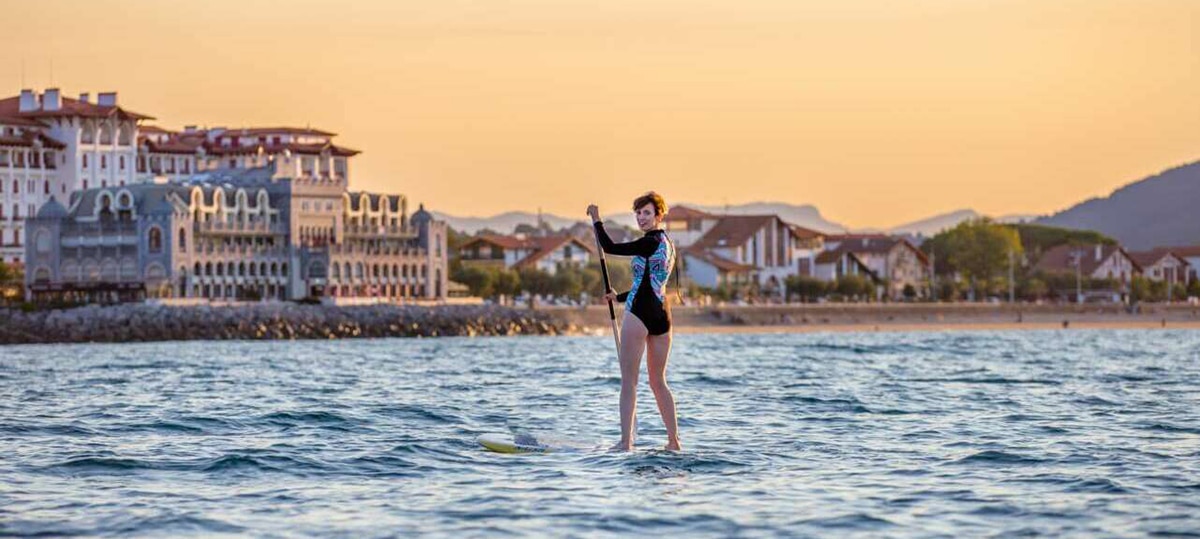
Well yes, with that style. Although it is still called a casino, there is no longer any casino inside and today it is a luxury house and a shopping center. It is also on this boulevard that you will see the best shops and restaurants in Hendaye. But further on, at the end of the beach, you will see a classic postcard of the town: the deux Jumeaux or twin rockss, on which a legend of Basque mythology weighs.
According to her, one day Basajaun, the man of the woods, was taking a walk in the Peñas de Aia when it occurred to him to throw a rock to destroy Bayonne. But he stumbled, the rock flew from his hands and fell beside the beach of Hendaye, splitting in two. The photo is a must, of course.
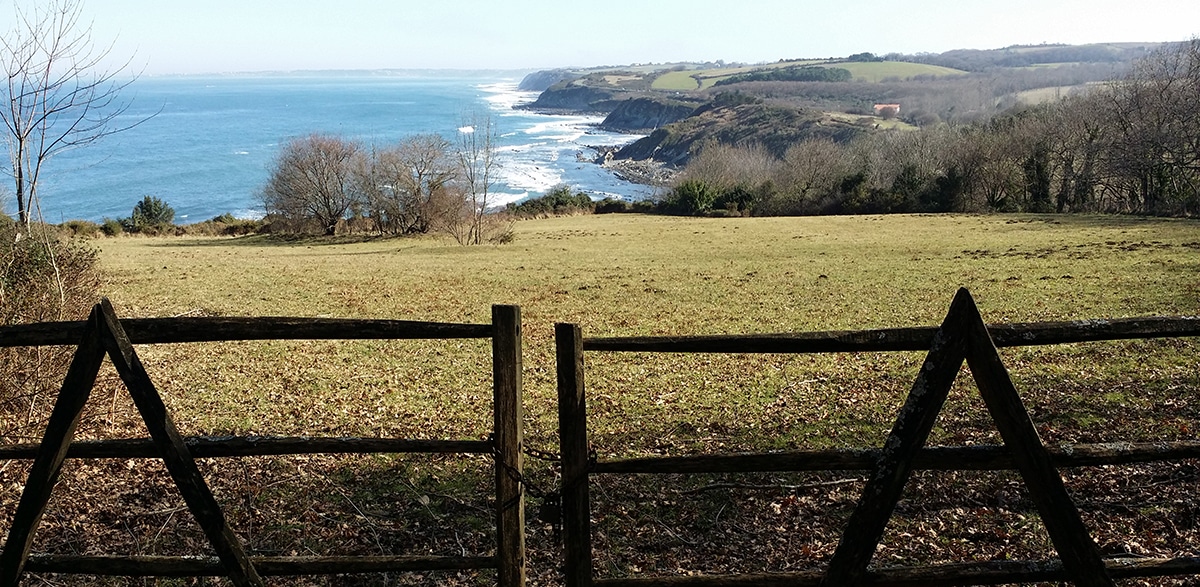
The Domaine d'Abbadia is a 64-hectare natural park that embraces the Château d'Abbadia that we named above as one of the treasures of Hendaye. You can tour their multiple trails, many of them along the coast and with beautiful views of the sea. You can also see the Twin Rocks and flysch, those other rocks that are popular on the Basque coast in general. The path that runs along the coast takes two hours and the internal path is just a segment of another longer one, the coastal path that unites Sokoburu with Erretegia and is 25 kilometers.
This territory is administered by the Coastal Protection Agency and has nothing to do, at least in terms of ownership, with the castle. So, you can't come and go at ease and it is advisable to visit the castle first and then go to one of the entrances to the park (there are three). And the castle? More than a castle is a striking mansion which was built after the second half of the XNUMXth century by order of Antoine d'Abbadia, half French half Irish, member of one of the richest families in France.
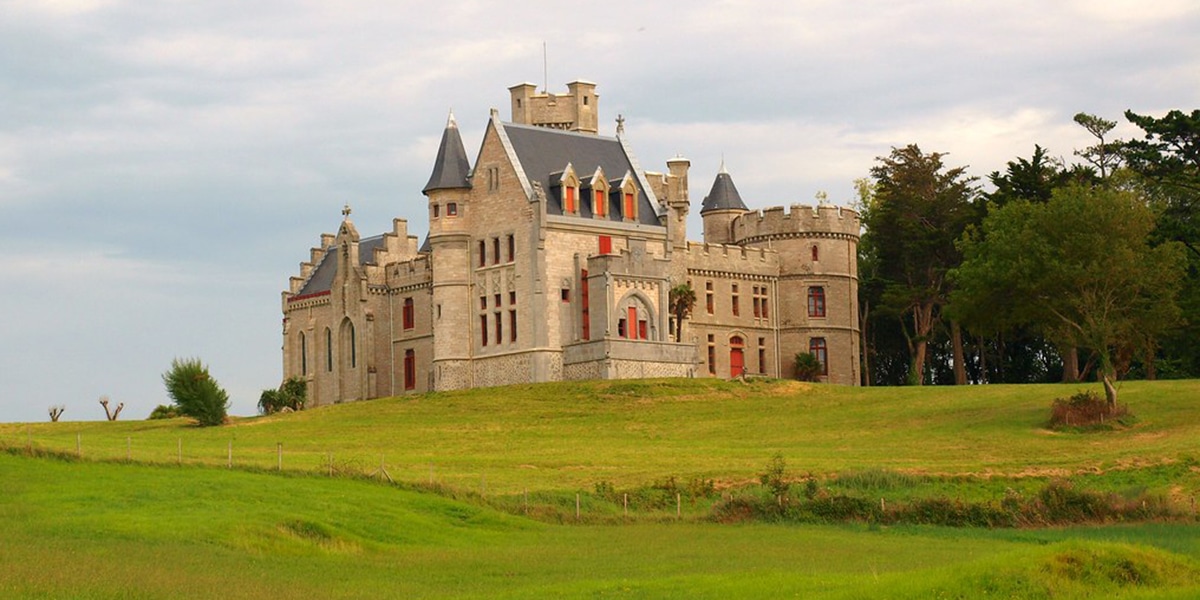
d'Abbadia was a bit of everything: geographer, astrologer, explorer, defender of the Basque language and its culture, so he has become Euskaldenaite for many, the father of the basques. And all of that is reflected in his castle/mansion. The architect is Viollet le Duc and the building is neo-gothic in style, being its external facade clearly of medieval inspiration. But inside, it is something else and there is everything, although a lot is art nouveau and oriental style: bookstore, chapel, Ethiopian paintings, an astrological observatory with a telescope... l. It is a curious, interesting and unique site.
The castle is just under two kilometers from the beach, open to the curious, managed by the Academy of Sciences. You can arrive by car and park it for free nearby, although if you go in summer it is possible that the spaces are already occupied. The castle offers guided tours and when it does other tours are not possible so check the website before you go.
HendayeSo, your next summer destination?